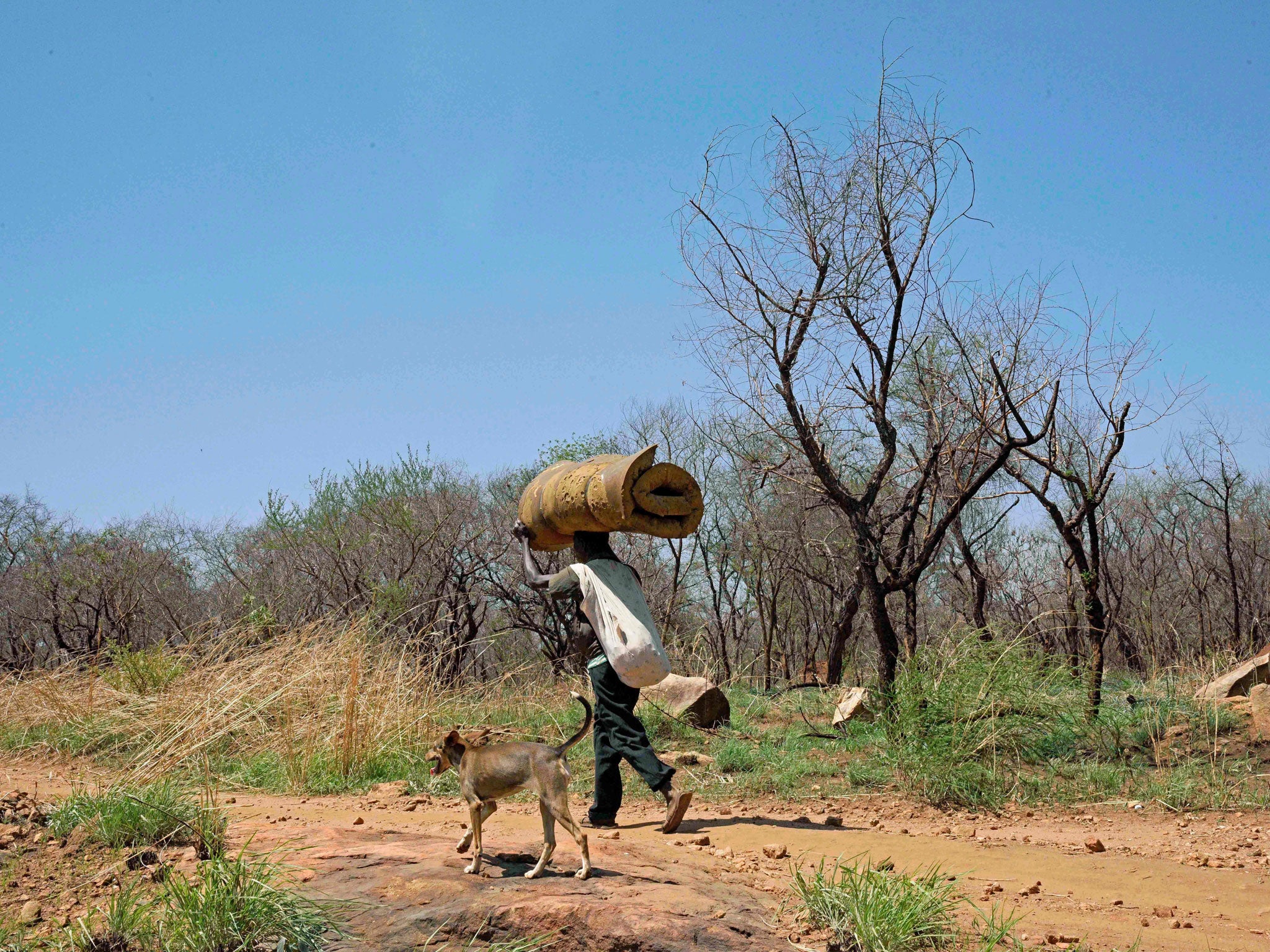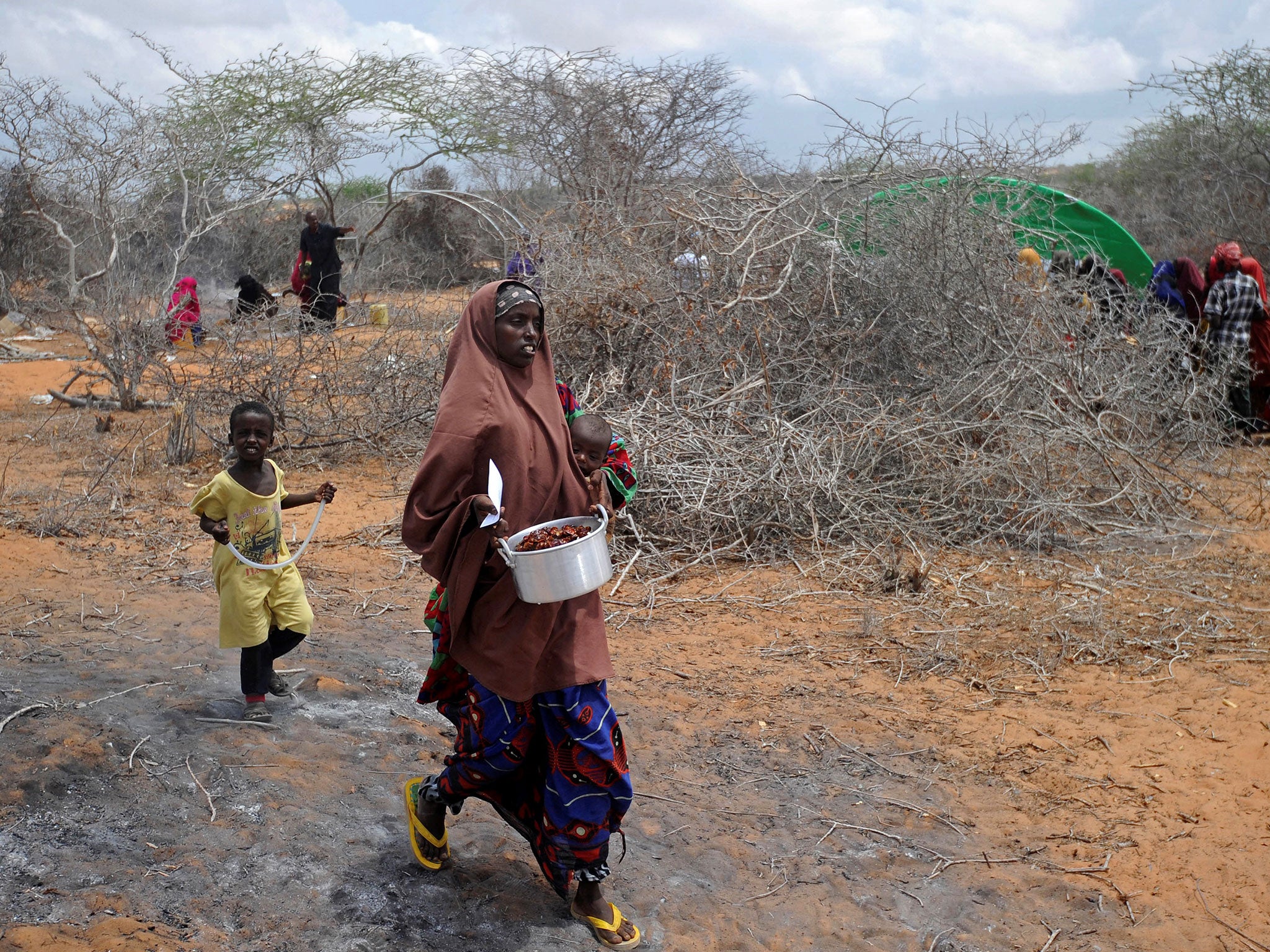Africa and Yemen face mass starvation and drought, UN refugee agency warns
Aid workers tell The Independent the region is on the brink of a humanitarian crisis

Parts of Africa and the Middle East face their worst drought in almost 70 years with a significant risk of starvation leading to “mass deaths”, the United Nations refugee agency has warned.
Four countries – Nigeria, Somalia, South Sudan and Yemen – stand on the brink of a new humanitarian crisis brought about by drought and famine.
Aid agencies have told The Independent that the bleak situation is likely to worsen significantly in the coming months as the so-called hunger gap takes hold.
The numbers, released by the UNHCR, are staggering: 20 million people live in areas where harvests have failed and malnutrition rates are increasing, particularly among young children. One million people are now on the brink of famine.
UNHCR has raised its projections for the number of refugees displaced from their homes in the region, including in South Sudan and Somalia, where hundreds of thousands have been forced to flee their homes to find food.
The UN agency blamed a combination of war, political instability and environmental factors including climate change and said it was “scaling up” its efforts in the region.
“The world’s most vulnerable in the Horn of Africa, Yemen and Nigeria are running out of time,” UNHCR spokesperson Babar Baloch told The Independent. “The risk of death from starvation is real.
“Time is of the essence here. If there ever was a more needed time for solidarity from the international community and individuals who can donate, it is now.”
He said the agency was preparing for a crisis at least as bad as in 2011, when over a quarter million people lost their lives in a drought described at the time as the worst in 60 years.

That could soon be eclipsed by this year's drought and famine, which is compounded by a funding shortfall that has meant an avoidable humanitarian crisis “is fast becoming an inevitability”, UNHCR said.
Overall the UN has appealed for $4.4bn (£3.5bn) for the four countries but has received less than $984m (£790m) – or 21 per cent – to date.
In Yemen, home to the world’s largest humanitarian crisis with almost 19 million people in need of aid, the situation is “nothing less than catastrophic”, according to Shabia Mantoo, the agency’s spokesperson for the country.
She told The Independent: “Millions are going hungry, displaced, in danger and languishing in abysmal conditions.
“Those affected and displaced by conflict are struggling to meet primary needs – food, water and shelter.
“People are dying, either directly as a result of conflict of because of preventable causes, others are living on the streets, more and more children are becoming malnourished and those most vulnerable, women and children in particular, are resorting to desperate measures to try and sustain themselves and their families at the risk of exploitation and abuse.”

In South Sudan, the world's youngest nation, close to one in five of the population has been displaced by the drought.
Juliette Stevenson, a UNHCR representative based in the capital of Juba, told The Independent: “The people in South Sudan continue to suffer immensely.
“There are over 1.9 million people displaced inside the country due to conflict, with many of them difficult to reach because of both the rampant insecurity and the huge logistical challenges working a country with vast distances and very few roads.”
Of particular concern to aid agencies are the summer months of June, July and August – known as the 'hunger gap' or lean season – when populations run out of food from the previous growing season but next year’s crops are not ready for harvest.
A spokesperson for Médecins Sans Frontières (MSF) said the agency’s medical teams were “scaling up” their efforts in Nigeria in preparation for an expected surge in hunger and malnutrition during the 'hunger gap'.
In the north-east of the country alone, food insecurity is projected to affect 5.2 million people over the three month period.
Peter Lundberg, the UN deputy humanitarian coordinator for Nigeria, said the lean season also combined with Nigeria’s rainy season, making hard-to-reach communities even more inaccessible.
“In other circumstances we would pre-position food, but here that is a problem because of the conflict,” he told The Independent. “The Nigerian army is not happy to bring food and store it in remote areas.
“We may open up other routes from Cameroon, but we’re also looking at taking food in by air, but that will be the last resort as it is extremely expensive.
“As it stands right now they will not even have food for the lean season as the current funding promised only lasts until June.
“We hope and expect more funding to come but the difficulty with this type of operation is it needs planning, so the sooner we know what funding we have, the easier it is for the people dealing with the logistics.”
Join our commenting forum
Join thought-provoking conversations, follow other Independent readers and see their replies
Comments